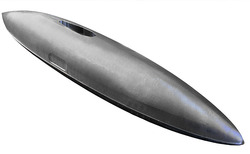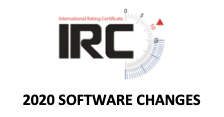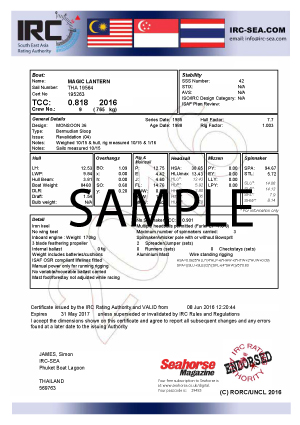Common Questions
 Monday, May 1, 2023 at 9:45AM
Monday, May 1, 2023 at 9:45AM 
Validity dates for South East Asia are 1st June - 31st May.
Validity dates are shown at the bottom of the certificate.
2024 Renewals for South East Asia will commence from 1st May.
Forms will be available for download in the Forms and Downloads section.
- Boats rated in 2022/2023: we do not need a revalidation form completed if there are no changes to the boat/data. However, you MUST declare the number of Headsails carried while racing. just drop us an email confirming the number and no other changes to info@irc-sea.com
- For change of ownership or contact details please attach a revalidation form and send to info@irc-sea.com.
- For boats not rated in 2022 or 2023, please complete a revalidation form by downloading an application form from the DOWNLOADS section and confirm the pole type, number of spinnakers, and whisker pole in addition to any changes. or or apply on-line by clicking here
Please check your Spam Folder.......
Before applying, please check the data and details on your certificate. If there is anything you think is incorrect or has changed please let us know; however for production designs remember some standard data may have been used which differs from that submitted (usually hull data).
Ratings may go up, down or stay the same from year to year, depending on changes and developments in the maths behind the rating calculation. This is developed on an annual basis and is generic for certain design characteristics. Please see the additional posts for more information about changes for this year.
Age Allowance is automatically applied to boats over 3 years old, but it is a small part of the calculation. (It cannot be assumed that the rating will reduce each year because of age allowance).
Rig Factor: As well as the rig configuration, varying rig and sail measurements can also have an impact on the RF calculation and may be the reason RF differs between two boats with the same rig controls listed on the certificate. Mast material is rated separately and is not part of the RF calculation.
Crew limitations IRC Crew Number is not variable by a boat and has no effect on TCC. However, note that the default limit is the crew weight (shown next to the crew number on the cert), so you are limited to that as a maximum weight unless the Notice of Race for the event modifies IRC Rule 22.4.
Endorsement: Endorsed certificates show a ‘Rating Authority ENDORSED’ stamp at the bottom right of the certificate. Other certificates show a ‘Standard’ stamp. If you need Endorsement for an event you are entering, please contact your Rule Authority for advice. https://ircrating.org/irc-certificate/irc-endorsement/
Amended certificates
For amended certificates, make sure you complete the ‘Source of Information’ to avoid any delays, thank you.
If you have an Endorsed certificate, remember that any amendments to rated data will require official measurement, please refer to our website especially regarding sail data and talk to your Rule Authoriy for advice if necessary.
We reserve the right to refuse to amend a certificate if we believe its purpose is to take advantage of a forecast eg. increasing sail for a race that is forecast to be light winds.
Trial certificates
Once you have a valid current certificate you can apply for trials to test the rating effect of potential changes. Note that there are limits to the number of trial certificates that are allowed, you can find details on the IRC website in the ‘Policies & Information’ section here: https://ircrating.org/irc-rule/.
Short-handed certificates
If you do short-handed (1 or 2 people) racing, and your boat is in a different configuration for this, you can apply for a separate Short-Handed certificate, see IRC Rule 8.2.1. There is no rating adjustment just for the reduced number of crew.
STIX and AVS Stability data
If you are planning to enter an event that is OSR Cat 3 or over you may need to have STIX & AVS (stability) data on your IRC certificate. Please check the specific events you are entering to see if it is required. Information about STIX & AVS can be found on the IRC website under Safety and Stability: https://ircrating.org/irc-racing/race-management/. Once obtained, the information will be added to your certificate free of charge as long as there are no other changes. STIX & AVS can be calculated by the Rating Authority from an ORC Stability and Hydrostatics Datasheet (for the boat in its current condition).
Change of Ownership (Re-registration)
If you sell your boat and the new owner wishes to race it (or if you buy a boat with a current IRC certificate), the new owner needs to apply for Re-registration. Make sure that suitable arrangements are made regarding your sail number if you wish to transfer it to another boat.



